11 First-Come, First-Serve Camping Tips and Tricks to ensure you get your spot
- Jennifer Melroy
- Last Modified May 26, 2022
- First Published on May 20, 2021
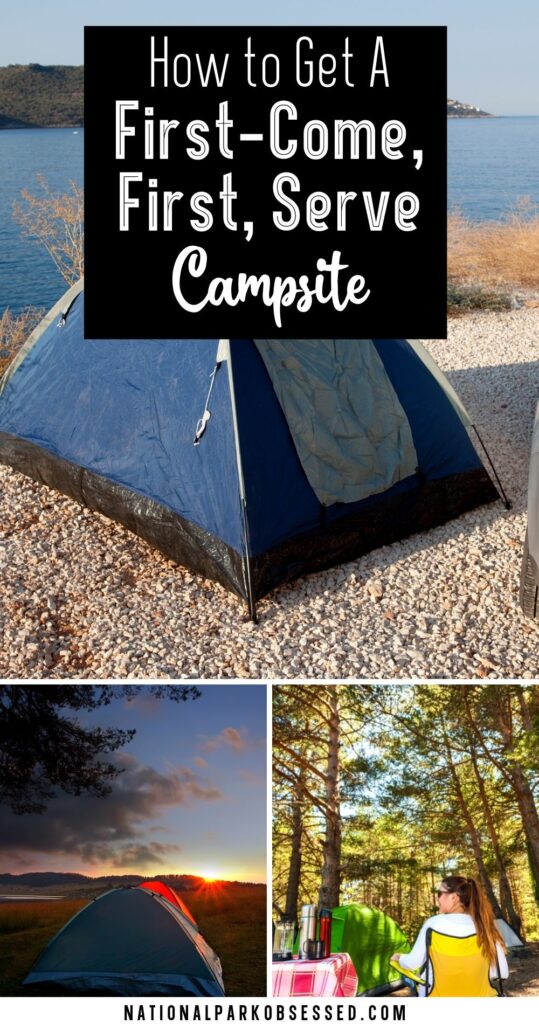
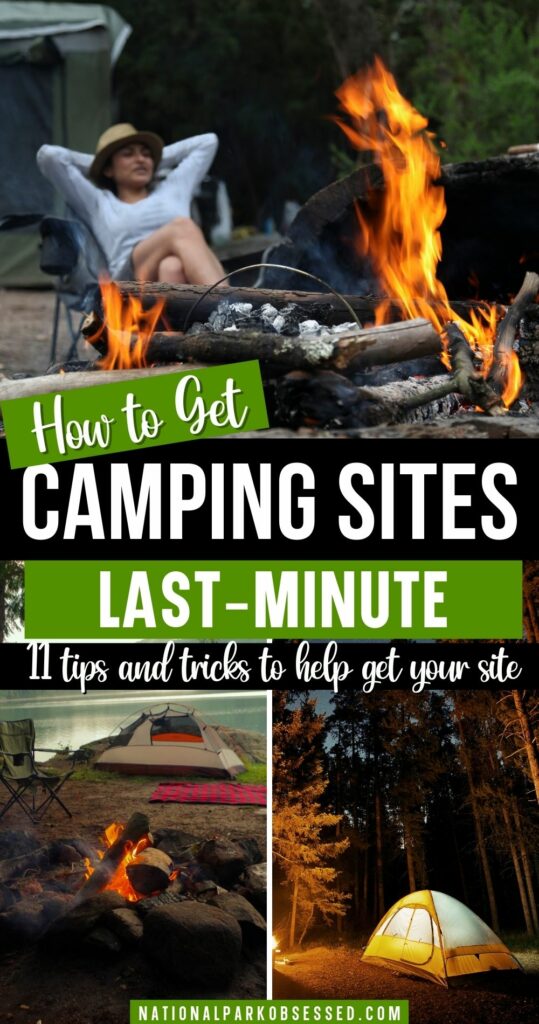
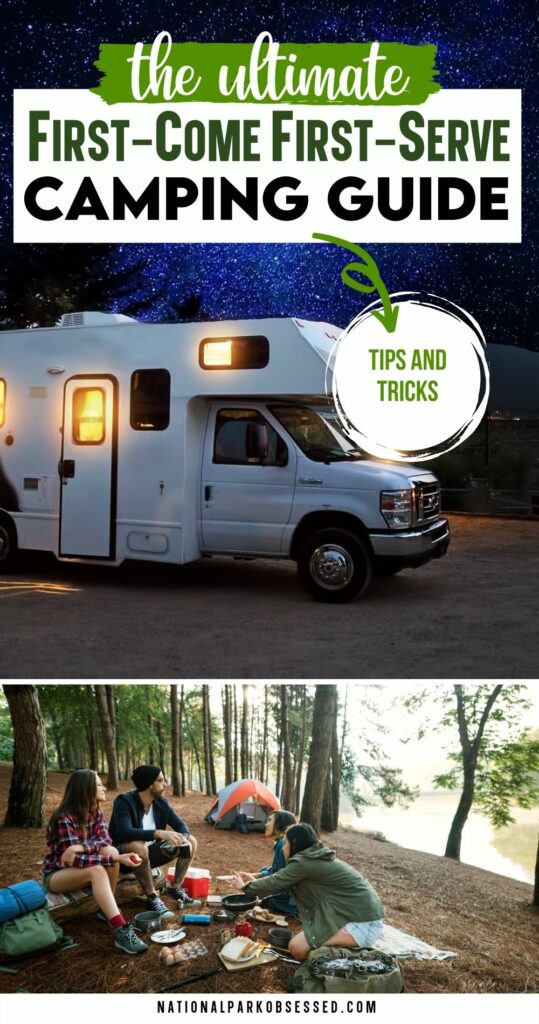
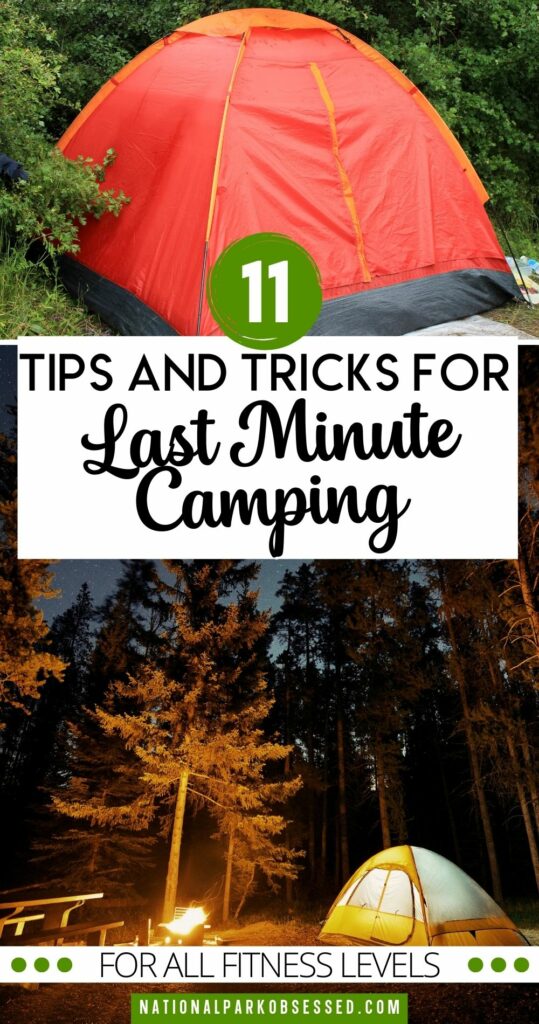
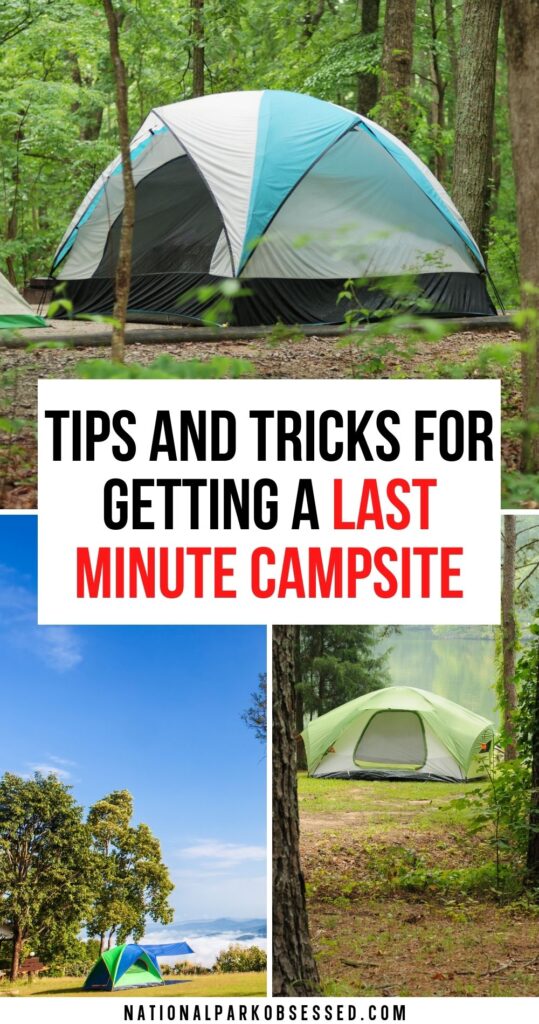
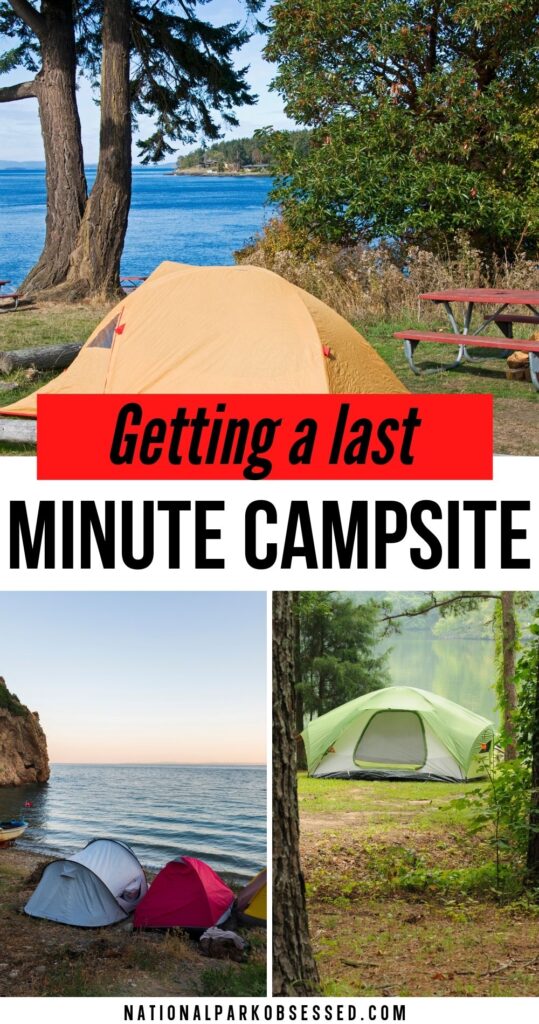

Post Summary: First-Come, First-Serve Camping
Thinking about making a spontaneous camping trip? Would you like to do a road trip without a set in stone plan? Both of these things are totally possible with first come first serve camping sites . These sites are for those of us who haven’t planned our trips 6-12 months in advance.
I’m not a fan of planning in advance so many of my trips are last minute or aren’t finalized in time to make reservations so most of my trips I rely on first-come, first-serve camping. Over the years, I have learned a few tips and tricks about scoring a first-come, first-serve camping site. Here are my best tips for first come, first serve camping.

This post may contain affiliate links, meaning if you book or buy something through one of these links, I may earn a small commission at no extra cost to you! Read the full disclosure policy here
What is First Come, First Serve Camping?
First come, first serve camping is one of many different types of camping you will hear about in and around the national parks. First come, first serve camping is exactly that. First-person to the site gets the site. There is never a guarantee that you will get a first-come, first serve campsite.
Sometimes first come, first serve camping is confused with boondocking. While there is no official definition of boondocking, the commonly accepted meaning is camping in an RV or campervan somewhere without a treated water source. For the most part, boondocking sites are first-come, first-serve campsites. But NOT all first come, first serve campsites are boondocking sites.
First come first serve camping is for non-planners who want the flexibility to go where the wind and weather take them and don’t mind being flexible or a little risk. There is always a chance of not getting a campsite.

Where are First-Come, First-Serve Campsites found?
First come first serve camping is found all over the United States. You will find them in National Parks, National Forests, State Parks, and even private campgrounds around the country. Most National Parks have some first come, first serve camping**. Depending on the popularity of the park and the location of the campground, it can sometimes be very challenging to score a first come first serve camping site.
Some time you win on first come first serve camping and score a site in Yellowstone’s Norris Campground at 5 pm on a Saturday; other times you head into Yosemite on a Wednesday in October and there isn’t a campsite to be found. There is always a risk of not getting a campsite but more often than not I have found a spot either at my primary campground or my plan B site.
** This is slowly starting to change and more popular parks such as Grand Teton and Great Smoky Mountains have eliminated first come first serve camping during peak season.
When do the first-come, first-serve campsites fill?
There is no exact answer to this question. It varies. It depends on the park. It depends on the popularity of the campground. It depends on the time of year. It depends on what is going on in the area. It depends on how many people wake up the night before and decide they want to camp.
Above I mentioned, I found a campsite at Norris Campground at 5 pm on a Saturday. The following morning, I headed out at 6:00 am to sit by Steamboat Geyser. There were 10 vehicles in line waiting to see if they could grab a campsite. I don’t know why Norris didn’t fill on that Saturday but I got extremely lucky. Norris was filled mid-morning for the four nights I was there.
A general rule is the more popular the park and the more popular the area of the park; the earlier in the morning said campground fills. A good example of this is Many Glacier campground in Glacier. This campground ALWAYS fills early in the morning. While Kintla Lake Campground fills in the later afternoon.
The same goes for popular times such as holidays and school breaks. Take Big Bend National Park. This is a hugely popular spring break park and it isn’t uncommon for campgrounds that rarely fill to fill mid-morning during this busy season.

Tips for Getting a First-Come, First-Serve Camping Spot
Hopefully, I haven’t scared you off first come first serve camping. It isn’t something you should fear. I know it sounds very scary to arrive somewhere without a guaranteed place to stay and it is. First come first serve camping might sound like something you would wing but it isn’t. You need a plan.
The planners of the world might consider your plan to be no plan but that isn’t the case. Your plan will have a few ifs and a plan B. So you have a plan. In making your plan there are a few things you can do to increase your odds of snagging a first-come-first-serve campsite.
Remember to being a good attitude, a little flexibility, and cash and use the tips to help get your first come first serve campsite.
Bring Cash
Most first come first serve sites are cash only. Typically, you are going to pull up to the campground and there will be an information board. There will be a box either attached to the board or near it with pay envelopes.
I have paid anywhere from nothing to $27 a night for a first come first serve site. It varies by park and campground but $20 a night is a pretty safe assumption. I try to keep a decent mix of bills when camping because some places do illogical things like a site is $17.50 a night. I hate those because if I don’t have coins or one-dollar bills, I end up spending an extra $2.50 on the site. I try to carry at least twenty dollars per night I’m planning to camp in a mix of $1, $5, and $20 dollar bills.
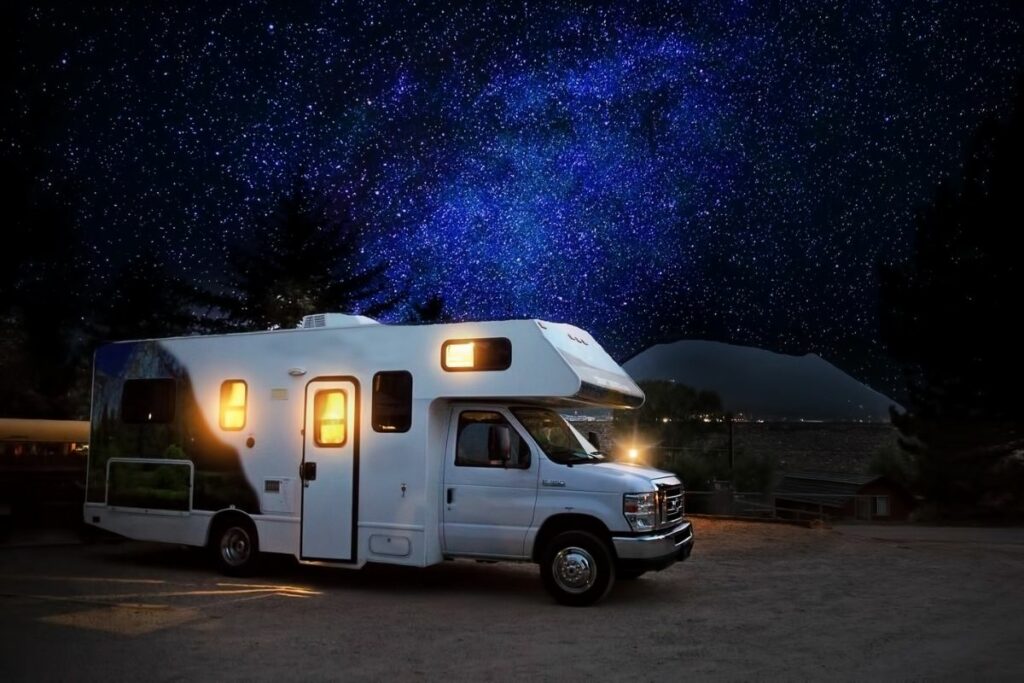
Secure Your Campsite First
If you are doing first-come, first-serve camping, your FIRST stop upon arrival should be the campground. Skip the visitor center, skip the overlooks, skip all those fun things. Getting your campsite should be your first priority. The longer you put it off, the more likely someone will grab the last campsite and you will have to go to plan B.
Arrive Early
The earlier you can get to a first come first serve campground, the better off you are. I generally try to arrive by 8 am. I want to be there to either grab a site from someone who is leaving early in the morning or a decent position in line ready when the campground host hands out sites.
Some campground will have a formal process to assign available sites and people seeking a spot line up and wait for the campground host to hand out the available spaces. While other campgrounds, you are welcome to drive in and find the open site and select it.
For campgrounds with a formal process, the campsite host will go through the campground at around 10-11 am and count up how many sites are available and will head over to the check-in and start handing out sites. They might only have 6 sites and if you haven’t arrived until 10 or 11 am, you may find yourself in 7th position or further back in line.
For campgrounds without a formal process, when I arrive I will head into the campground and start looking for open sites. It isn’t uncommon for people to pack-up between 7-9 am and head out. So oftentimes, I will find a site that has just been emptied and is ripe for the taking. Before setting up, please check the signpost. If there is a slip of paper on it, check the date and make sure they have officially checked out.
If you don’t see an empty site, find a parking spot and chill out for wait 15-20 minutes. Keep an eye on the campground. Look for someone who looks like they are packing up. It is ok to ask if they are checking out but don’t hover and make them feel like they have to rush to leave.

Arrive on a Weekday
A typical workweek is Monday to Friday. Campground use mirrors this. Campgrounds are typically busiest on Friday and Saturday nights when people aren’t working. Most weekend campers will be packing up and heading out on Sunday morning. So Sundays are a great time to arrive.
Pretty much any weekday but Friday is a good time to arrive if you are looking for a first-come, first-serve site. Campgrounds do tend to fil as the week goes on so if you can arrive earlier in the week.
Visit During the Off-Season
Looking for campsites is way easier when fewer people are around so planning your park visits during the off-season can help increase your odds of getting a campsite. Plus some park campgrounds don’t take reservations outside of peak season so there is usually more first-come, first serve camping during the off-season.
Avoid the holidays
Even during the off-season, avoid holiday weekends both federal and school. A lot of locals will head to their local park even during off-season to enjoy their time off and avoid the tourist crowds.
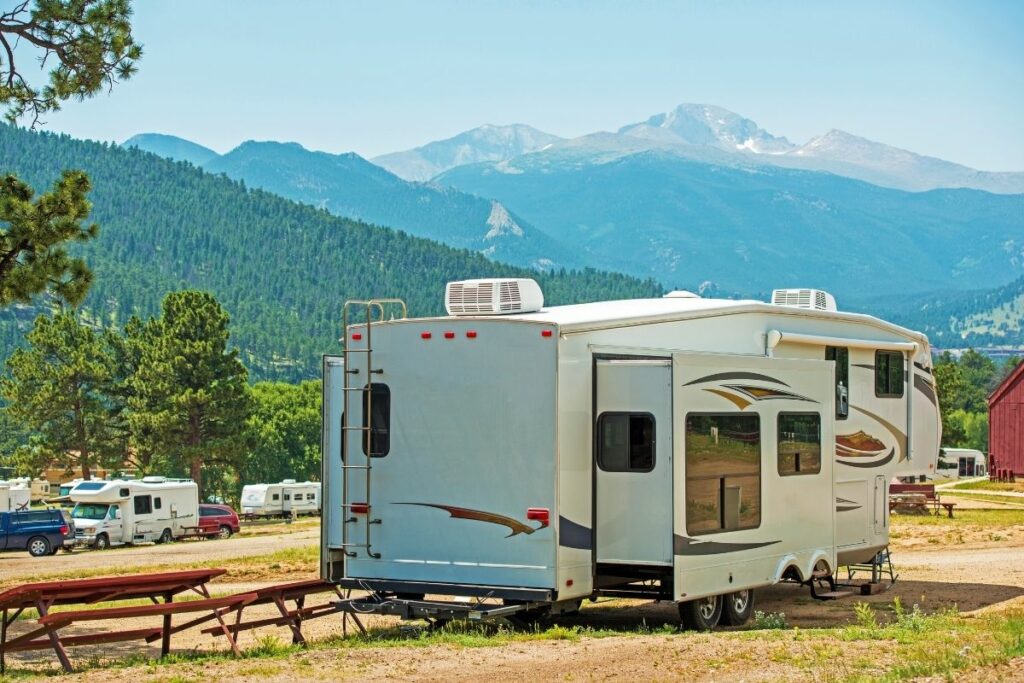
Pick Less Popular Parks
Some parks are better than others for planning a first-come, first-serve camping trip. Some parks have more first come, first serve sites. Some parks have lower visitation levels so there are less people trying to camp.
This is just the nature of numbers. You can get first-come, first-serve sites at more popular parks, but it’s just a little more challenging than say a lesser-known and lesser-visited park. You can pretty much always get a site at Congaree National Park. Zion can be tough depending on the time of year.
I have successfully showed up and got campsites at busy parks such as Glacier (twice), Yellowstone, Zion, Bryce and Denali. I have also failed in Yosemite.
This holds true for National Forests and State Parks as well.
Pick a less popular campgrounds
Some campgrounds are more desirable than others. The campground in the heart of the action and is conveniently located to many of the parks most popular features will be the most popular and completive campground in the park.
Back when Grand Teton had first come first serve camping, Jenny Lake campground was ALWAYS full and was super hard to get a spot in. Jenny Lake was centrally located and everyone wanted to stay there due to the view and access to some of the best hiking in the park. On the other hand, Lizard Creek Campground is in the north section of the park is way less popular due to being further away from the action.
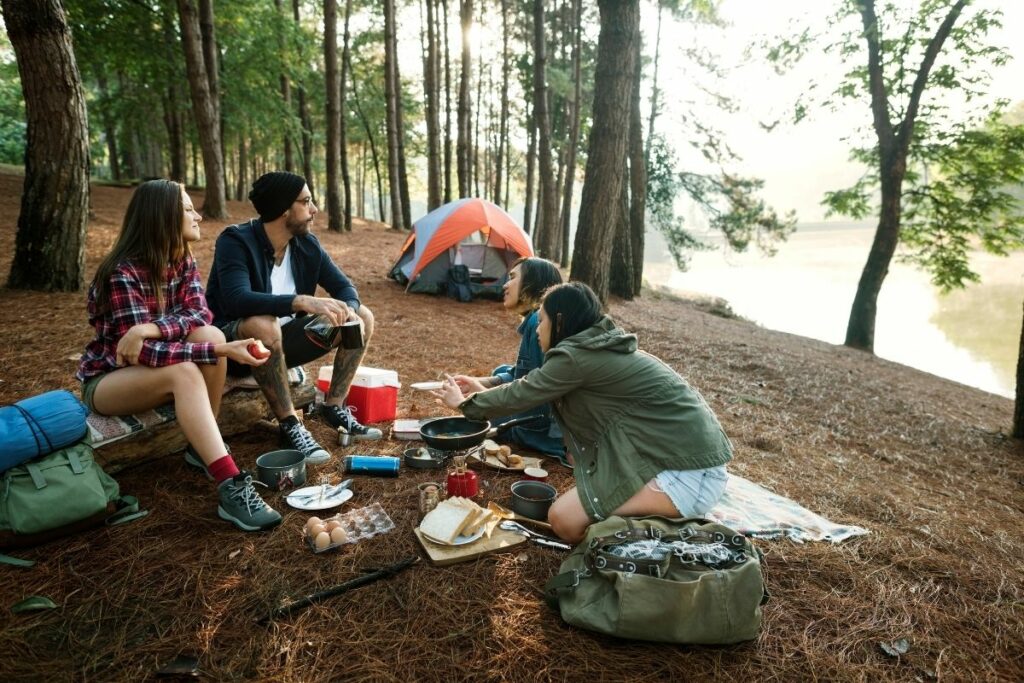
Look for a site in the bigger campgrounds
The number of campsites in the campground can vary greatly. When you are hunting for a first come, first serve campsite where possible, pick the larger campground. The more spaces in the campground and the better your chances to snag a site.
Death Valley National Park has 631 first come first serve campsites across 8 campgrounds. They range in size from Emigrant campground with 10 sites to Sunset Campground with 270 sites. When I was visiting Death Valley, Emigrant was my first choice, but I knew it was unlikely there would be space as I was arriving late at night. I wouldn’t have drive out of my way to check Emigrant but since it was on the way I checked. It was full. I found space that first night in Stovepipe Wells Campground (190 sites).
Be Flexible and Adapt
When you drive into a campground, take a look at it. Does it look like it’s super full? How many spaces are open at the entrance? Is there a line of cars in front of you? Does it feel like they are looking for a site or are they heading to their campsite?
If it feels like the campsite is full and there are lots of people looking for a campsite, this is not the moment to be picky about your site. TAKE the first site you can find. If it’s awful and you are not solo, drop one person off to hold the site and then drive around to see if you can locate a better site.
If you are solo or no better site is available, pay for one night, and the following more. See if another site opens up that is better.
Remember, any campsite is better than no campsite.
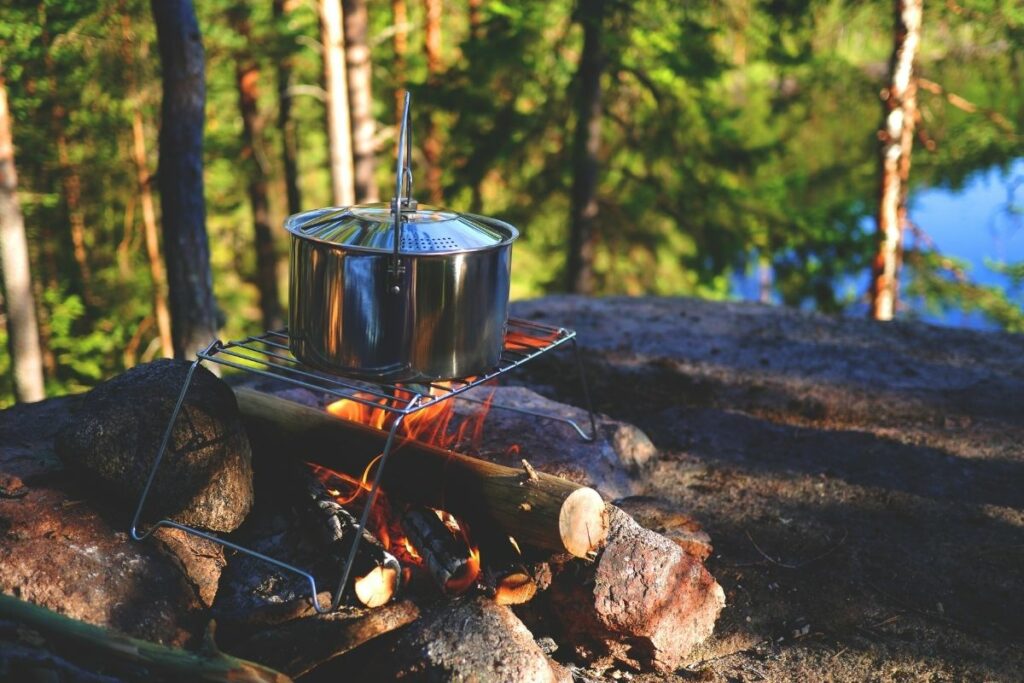
Have a Back-up Plan
When you are first come first serve camping, ALWAYS have a Plan B and maybe a Plan C. It is always possible that you will NOT get a first-come, first-serve camping site. So you need to have a Plan B.
My first choice is always an alternative campground in the park. After that is another nearby public campground such as a National Forest campground, a Bureau of Land Management (BLM) campground, or State Park. If there aren’t any of those within 30 minutes to an hour of the park, my next choice is dispersed camping. Dispersed camping is usually found in the National Forests and BLM land. This type of camping is basically, find a hard-packed area off the roadway and set up camp pretty much anywhere you’d like. This is dry camping so there is no bathroom or water.
After that is boondocking in someone’s parking lot. FreeCampsite.net maintains a database of free campsites and usually has a decently up-to-date list of parking lots you can spend the night in. Walmart’s are my go-to. Walmart’s standard policy is feel free to spend the night unless local ordinances ban the practice.
Last but not least is paying to stay at a commercial campground.
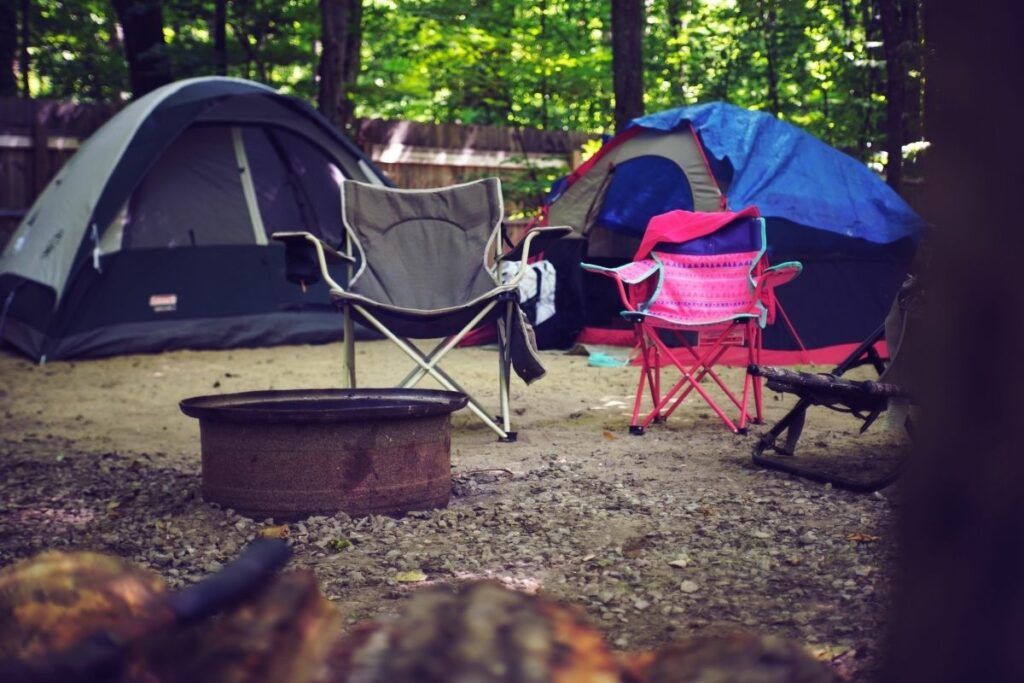
BONUS TIP: Keep your group size small.
This tip is really only for solo travelers or couples and NPS’s official policy in the majority of parks is that one shall not drive around the campground and ask to share a site with someone already in a campsite. Unofficially, rangers and campground hosts aren’t going to notice if you drive around and happen to see a friendly-looking couple or solo traveler who are tent camping sitting in their campsite and ask if they’d like to share since the campground is full and you’d be willing to split the cost of the campsite. Having some beer or wine to share is usually well-received as well.
If you resort to using this method, please be polite about it and friendly. If they say no, say thanks anyway and walk away.
Frequently Asked Questions About First Come, First Serve Camping
Can you leave a first come first serve campground?
Yes, as long as you have paid for your site and leave some personal belonging to make it clear that the site is occupied. It is usually a good idea to take a picture of your slip so a sneaky person can’t steal your campsite.
What is FCFS in camping?
First-Come First-Served (FCFS) Camping. This type of camping is usually managed by self-registration and the first person to pay for a site gets the site.
Final Thoughts on First-Come, First-Serve Campgrounds
I hope this helps you get your first-come, first serve campsites as you explore the National Parks.
Save for Later: 11 First-Come, First-Serve Camping Tips and Tricks to ensure you get your spot

Jennifer Melroy
Hi, I'm Jennifer!

Welcome to the wonderful world of National Parks. I'm here to help you plan your NEXT amazing adventure through the United States National Parks and beyond. I want the national parks to be accessible to all.
I live in Tennessee, and when I'm home, you can find me hiking in the Smokies and the Cumberland Plateau.
58/63 National Parks
250+/423 National Park Units
Want to know more? Start Here.
ACKNOWLEDGEMENT OF LAND
On this site, we promote travel to the United States and beyond that are the traditional lands of Indigenous and First Nations peoples.
With respect, I make a formal land acknowledgment, extending my appreciation and respect to these lands’ past and present people.
To learn more about the people who call these lands home, I invite you to explore Native Land.
DISCLAIMER
National Park Obsessed assumes no responsibility or liability for any errors or omissions in the content of this site (NationalParkObsessed.com). The information contained in this site is provided with no guarantees of completeness, accuracy, usefulness or timeliness. You are encouraged to conduct your own due diligence before acting on the information provided on this site and should not rely on the opinions expressed here.
There is an inherent risk in all outdoor recreation activities, the reader assumes all responsibility for their own personal safety.
DISCLOSURE
We are a participant in the Amazon Services LLC Associates Program, an affiliate program designed to provide a means for us to earn fees by linking to Amazon.com and affiliated sites.
Privacy Policy • About Us • Contact
Select stock photography provided depositphotos
Copyright ©2023 National Park Obsessed, LLC
Last Updated on 26 May 2022 by Jennifer Melroy





2 Comments
Ames
So glad I stumbled on your post! Learned a lot! I am planning on campervanning and heading out to first-come-first-serve camp grounds at Olympic NP. This may be a silly question but are there in and out privileges? If I head to the camp ground early to reserve my spot, can i still drive my van around and come back to camp later? Thanks!
Jennifer Melroy
There are in and out privileges. Make sure to leave something in the site to mark that is occupied. I recommend taking a picture of your stuff. RV’ers have a bad habit of not checking for occupation before setting up.